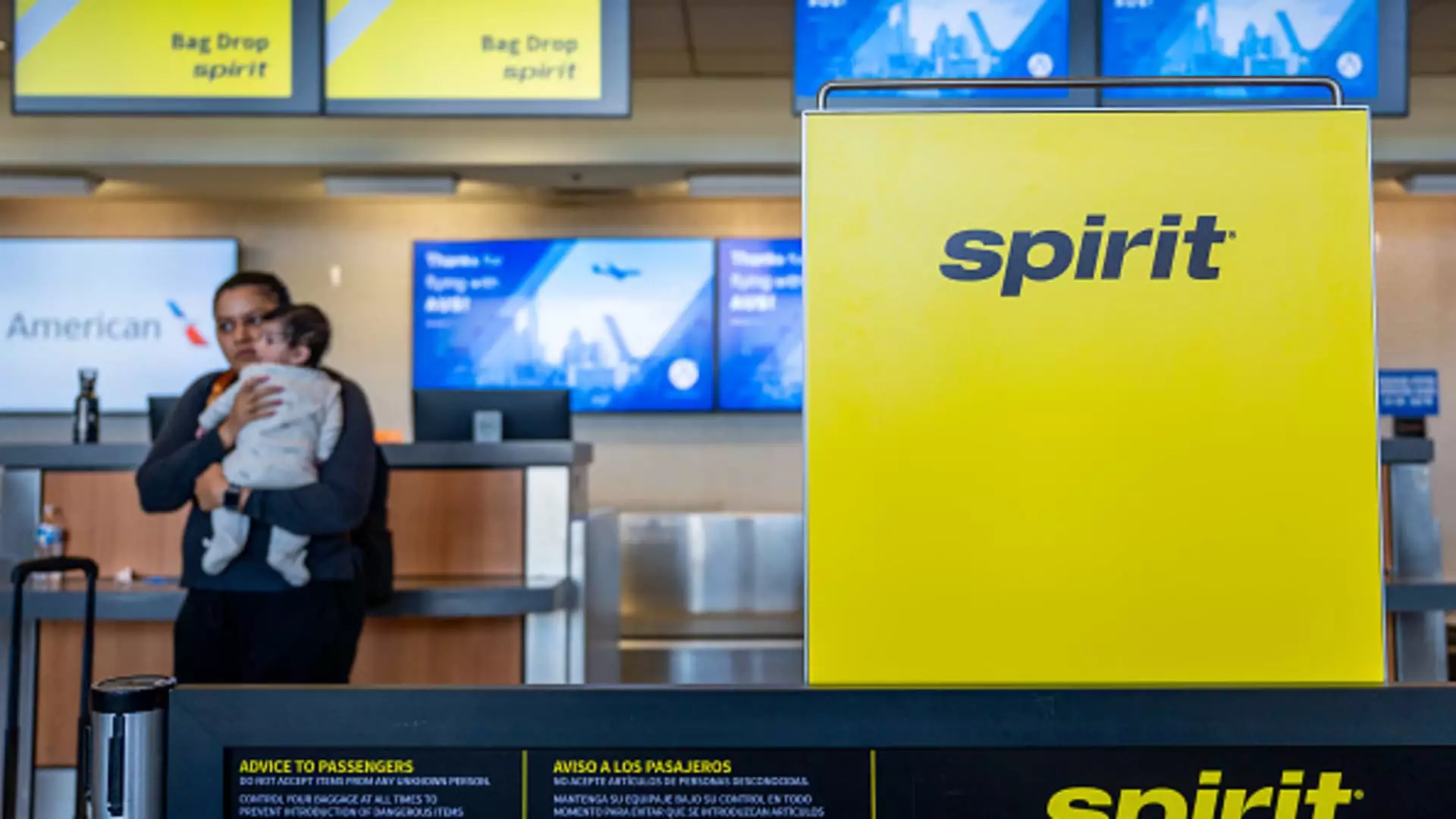Spirit Airlines, a budget travel favorite, has made headlines by filing for Chapter 11 bankruptcy protection, marking a significant moment as it is the first major airline to take this step in over a decade, following American Airlines’ filing thirteen years prior. It’s important to clarify that this filing does not equate to the closure of the airline. Instead, it serves as a strategic maneuver aimed at providing the airline with an opportunity to restructure its financial obligations and stabilize its operations. Despite ongoing financial losses—dating back to 2019—that worsened during the pandemic, Spirit is determined to continue its flights and maintain operations for its customers, as evident from recent communications by CEO Ted Christie.
The Burden of Debt and Industry Challenges
Spirit Airlines’ journey towards bankruptcy isn’t solely a consequence of the pandemic; it reflects ongoing challenges that have persisted for years. Before the pandemic, the airline was already grappling with a staggering $1.1 billion in debt payments that needed renegotiation. Compounding this issue were additional burdens, like climbing operational costs and a lengthy ground time for numerous Airbus jets due to an engine recall. Attempts to merge with JetBlue Airways were thwarted by a federal judge’s decision, placing additional strain on Spirit’s financial recovery trajectory.
The essence of Spirit’s financial distress can be traced back to its operational model, which heavily relies on low fares and ancillary revenues. However, with rising costs and an inability to raise prices amidst heightened inflation, the airline found itself in a precarious situation without a customer base able to sustain its financial needs. According to travel industry analysts, the airline’s options were shrinking rapidly as it approached critical deadlines tied to its credit agreements.
Filing for Chapter 11 may seem alarming to consumers; however, it is intended to serve as a restructuring lifeline. Spirit has indicated that it has reached an agreement with its primary bondholders for a streamlined approach to its bankruptcy proceedings, which could allow the airline to emerge from this financial quagmire by the first quarter of 2025. This strategic filing provides not only a period of protection from creditors but also an opportunity to realign its business operations potentially. Notably, the plan includes preserving its flight operations, particularly during the lucrative holiday season, which is crucial for the airline’s cash flow.
As Spirit seeks to maintain its operational schedule, customers are urged to remain vigilant about potential changes in flight availability and other operational adjustments. Moreover, they should also be cognizant of the implications of the bankruptcy on ticket refunds. The Department of Transportation has outlined that requests for refunds may become more complicated during such times, underlining the significance of understanding consumer rights in this context.
For travelers concerned about existing bookings or potential delays involving Spirit Airlines, understanding consumer rights is paramount. Under U.S. consumer protection laws, passengers are entitled to cash refunds for canceled flights, but the situation becomes murky once an airline enters bankruptcy proceedings. Even if Spirit upholds its operations, customers might face challenges in obtaining refunds or rebooking flights amidst financial turbulence.
It is advisable that passengers safeguard their purchases by using credit cards, which often provide better consumer protection compared to debit options or cash transactions. Additionally, looking into travel insurance could offer a layer of security for prepaid expenses in case of abrupt changes due to the airline’s restructuring efforts.
In a further twist, as Spirit Airlines emerges from this chapter, potential buyers for its assets may appear, further reshaping the industry landscape. For passengers, this means they’ll need to be prepared for an evolving airline industry, where previously established carriers might become leaner and more cost-efficient through mergers and acquisitions.
Looking toward the future, it remains unclear how Spirit Airlines will navigate the aftermath of this filing. While the airline is optimistic about a successful restructuring, industry analysts suggest that a revised business model may be critical to ensure long-term sustainability. Collaboration with former merger partners, like Frontier Airlines, might also be a possibility as the industry’s climate evolves.
For passengers, being informed and proactive regarding travel arrangements is crucial, especially in light of uncertainties around schedules and refund policies. The experience of Spirit Airlines serves as a narrative about resilience and responsiveness in a volatile travel market. As conditions continue to shift, the airline’s fate will likely be a case study for both industry stakeholders and consumers moving forward.

Leave a Reply